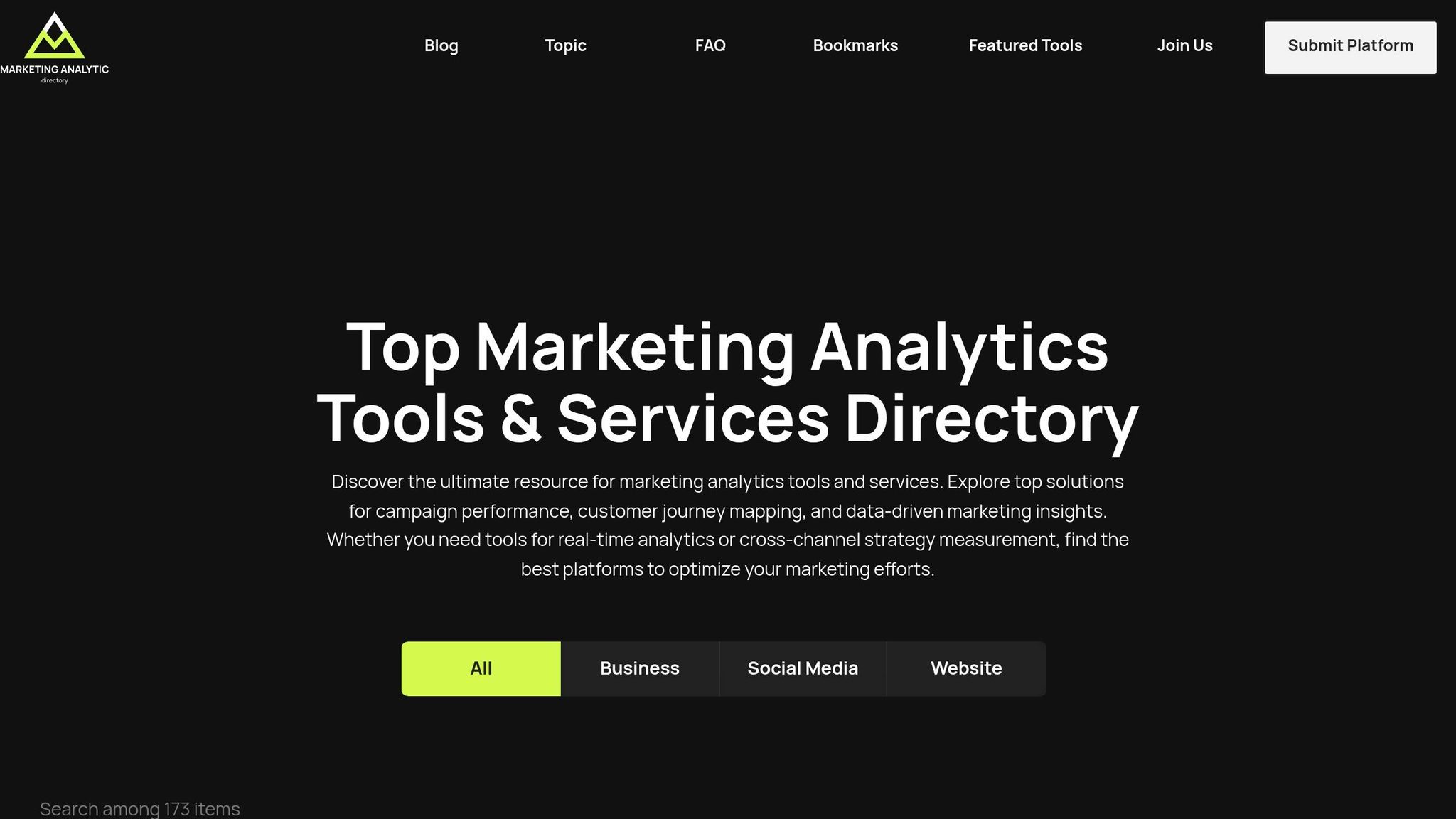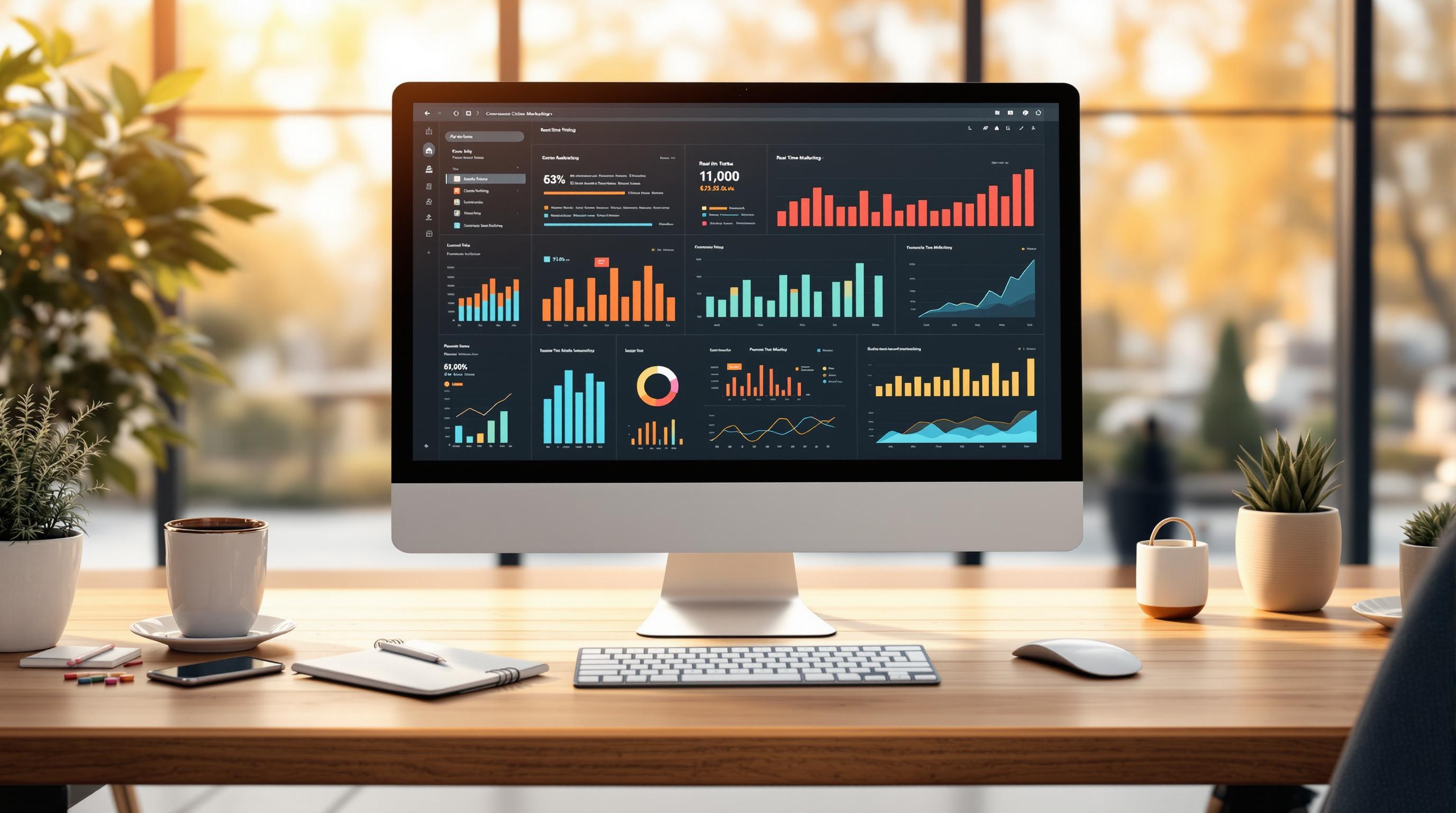Ad frequency and recency are two critical metrics in digital advertising. Here's a quick breakdown:
- Ad Frequency: Measures how many times a user sees the same ad within a specific time frame. It helps build brand awareness but can lead to ad fatigue if overused. The ideal range is typically 3–7 exposures per campaign.
- Ad Recency: Tracks the time since a user last interacted with an ad or brand. It focuses on timely engagement, ensuring ads appear when users are most likely to convert.
Both metrics serve different purposes - frequency ensures visibility, while recency prioritizes timing. Balancing these two can improve campaign outcomes by maximizing engagement and minimizing wasted ad spend.
Quick Comparison
| Aspect | Ad Frequency | Ad Recency |
|---|---|---|
| Definition | Number of exposures in a timeframe | Time since last brand interaction |
| Purpose | Build familiarity | Drive timely engagement |
| Risks | Ad fatigue, diminishing returns | Missed opportunities for follow-up |
| Best Use | Brand awareness campaigns | Retargeting, time-sensitive ads |
Finding the right balance between frequency and recency is essential for effective campaigns. Frequency caps and recency windows, adjusted based on audience behavior, can help achieve this balance.
Day 2️⃣: Optimize Frequency Caps #programmaticadvertising
Ad Frequency vs Ad Recency Comparison
Understanding the distinction between ad frequency and ad recency can significantly shape your advertising strategy. These two metrics influence audience behavior in different ways, each playing a unique role in campaign performance.
Main Differences Between Frequency and Recency
Ad frequency measures how many times a person sees an ad within a specific period, while ad recency focuses on the time elapsed since the last interaction with a brand.
Frequency relies on repetition to create familiarity. Research shows that seeing an ad 5–7 times can make viewers up to eight times more likely to take action. For Connected TV campaigns, the average frequency is 7.42 exposures.
On the other hand, recency prioritizes timing, ensuring ads appear when they're most relevant. For example, YouTube ads shown 2–6 days before a TV premiere increased viewership likelihood by 133%, while ads displayed on the premiere day boosted viewership by 24%. This highlights how recency can be especially powerful in time-sensitive contexts.
| Aspect | Ad Frequency | Ad Recency |
|---|---|---|
| Definition | Number of exposures within a timeframe | Time since the last interaction |
| Impact on Campaigns | Builds brand awareness | Drives timely engagement |
| Risks | Ad fatigue, diminishing returns | Missed long-term opportunities |
| Common Use Cases | Branding campaigns | Retargeting, time-sensitive events |
These differences illustrate how frequency and recency serve distinct purposes, each with its own strengths and challenges.
Pros and Cons of Each Metric
Ad frequency is excellent for building brand recognition. Studies show that three exposures can boost brand awareness, while 2–4 exposures are ideal for driving engagement. This makes frequency particularly effective for new brands or short-term promotions .
However, there are risks. When exposure exceeds the optimal range, engagement can drop as audiences grow annoyed or indifferent. Additionally, campaigns focused heavily on frequency can become costly, as they repeatedly target the same users.
Ad recency, on the other hand, thrives on personalization. By targeting users who recently interacted with your brand, it keeps your message fresh and relevant. Recent visitors tend to convert at higher rates, but an overemphasis on recency could mean neglecting prospects who need more nurturing.
Problems with Poor Frequency and Recency Management
Mismanaging ad frequency can lead to several issues. Overexposure often results in lower click-through and conversion rates, ultimately harming your ROI . Conversely, underexposure can leave 80% of users unable to recognize or trust your brand, especially in today’s crowded advertising landscape.
Similarly, poor recency management can waste ad budgets and miss critical opportunities. Comscore research highlights the importance of timing ads closer to consumer decision-making moments, particularly for time-sensitive events. Ignoring recent interactions can cause potential customers to lose interest and shift focus elsewhere.
To avoid these pitfalls, continuous monitoring and optimization are key. For example, brand awareness campaigns often benefit from frequency caps of 3–5 impressions per day, while conversion-focused campaigns may require 5–10 daily exposures. Testing various strategies and analyzing metrics like click-through and conversion rates can help fine-tune the balance for different audience segments.
How Frequency and Recency Affect Campaign Results
Ad frequency and recency play a significant role in shaping campaign ROI, influencing how audiences respond to your messaging.
How Frequency Changes Campaign Performance
The number of times someone sees your ad - its frequency - can either enhance or hurt your campaign’s performance. Early on, repeated exposure helps build brand awareness and increases the likelihood of purchase. But there’s a tipping point. Bombarding your audience with the same message too often can lead to fatigue, causing interest to drop off.
The right frequency depends on your campaign goals. For example, if you’re aiming to boost brand awareness, a moderate approach works best. Spacing out your ads gives people time to absorb your message without feeling overwhelmed. On the other hand, campaigns focused on driving conversions often benefit from more frequent touchpoints, especially when targeting users who have already shown interest. Spreading these interactions over a few days can also help prevent negative reactions and improve message retention.
Timing is just as important as frequency, which is where recency comes into play.
How Recency Drives Quick Engagement
Recency zeroes in on how recently a customer interacted with your brand, rather than how many times they’ve seen your ad. This concept taps into a psychological bias: people tend to recall the most recent information they’ve come across.
"Recency attempts 'to intercept the next purchase with a brand message.'" – Erwin Ephron
When your brand is fresh in someone’s mind, they’re more likely to act. Ads targeted at customers who have recently engaged with your brand often drive higher conversions because the interaction is still top of mind. Recency also allows for more tailored messaging. For instance, someone who just browsed your homepage might see a general ad, while someone who abandoned their cart could receive a reminder to complete their purchase.
Using Both Frequency and Recency for Better ROI
The real magic happens when you combine frequency and recency. Together, these metrics help balance engagement and avoid overwhelming your audience, ensuring your ad spend works harder.
Segmenting your audience based on their interaction history is key. For users who haven’t engaged in a while, a frequency-based approach helps rebuild familiarity and trust. Meanwhile, recency-driven tactics can prioritize those who’ve interacted with your brand recently, delivering personalized messages that align with their behavior. This strategy not only boosts responsiveness but also ensures your budget is allocated more efficiently, maximizing returns while minimizing waste.
sbb-itb-5174ba0
Real-World Applications in Marketing Analytics
Effectively applying frequency and recency in marketing requires tools that can track these metrics in real time.
Tools for Tracking Frequency and Recency
Modern marketing analytics platforms provide advanced tools to monitor both frequency and recency across various channels. For example, Google Analytics offers detailed tracking capabilities, particularly for website traffic and user behavior. While its free version is powerful, some advanced features require a premium plan. These insights help marketers analyze how recent interactions influence a customer’s journey toward conversion.
Another widely used method is RFM (Recency, Frequency, Monetary) analysis, which ranks and groups customers based on their purchase behavior. This approach allows marketers to identify segments like high-value customers, new buyers, and those who haven’t engaged recently. It’s a practical way to focus campaigns, especially given the well-known principle that 80% of a company's revenue often comes from 20% of its customers.
Other tools, such as HubSpot, Tableau, and TapClicks, cater to businesses of all sizes with varying capabilities and price points. However, many marketers encounter challenges in making full use of their data. In fact, research shows that 87% of marketers struggle to utilize their data effectively, and only 59% feel their tools are properly integrated. On the other hand, 93% of marketers report that having a centralized, reliable data source greatly simplifies their work.
Improving Programmatic Advertising
These tools do more than just track metrics - they enable advanced strategies like programmatic advertising. Programmatic platforms use real-time data to fine-tune ad sequencing and personalization, ensuring a balance between visibility and preventing ad fatigue.
For instance, sequential messaging campaigns thrive on optimized frequency and recency settings. Instead of bombarding users with the same ad, programmatic tools can deliver a series of ads in a specific order, timed based on the user’s last interaction. This approach reduces overexposure while building a cohesive narrative that nudges users through the conversion funnel.
Interestingly, recent studies show that media’s influence on sales has grown from 15% to 36% over the past 11 years. Meanwhile, creative content remains a major driver of success - Project Apollo found that 65% of a brand’s sales lift from advertising came from the creative aspect. This highlights the value of combining smart frequency and recency management with strong creative execution for even greater results.
Another valuable application is in lookalike audience expansion. By analyzing how top-performing customers interact with ads - both in terms of exposure frequency and timing - marketers can craft strategies to target similar prospects. This ensures that new audiences receive the right messages at the right time, maximizing engagement.
How Marketing Analytics Tools Directory Can Help

With so many tools available, choosing the right one can feel overwhelming. That’s where the Marketing Analytics Tools Directory comes in. This resource offers a categorized platform featuring top marketing analytics tools, data solutions, and professional services. It’s designed to help businesses find tools tailored to real-time analytics, campaign tracking, and audience insights - key elements for effective frequency and recency management.
For smaller businesses, the directory highlights affordable options like basic frequency capping tools. Meanwhile, enterprises can explore sophisticated solutions for programmatic advertising. The directory also includes tools that address integration challenges, offering reporting dashboards that consolidate frequency and recency data into a single source of truth - a feature 93% of marketers find invaluable.
To keep up with the fast-changing marketing landscape, the directory allows businesses to submit their tools or services. It also categorizes resources like A/B testing tools and big data solutions, giving marketers access to a wide range of options for optimizing frequency and recency alongside broader campaign analytics needs.
Best Practices for Ad Frequency and Recency
Balancing ad frequency and recency is essential for keeping your audience engaged while ensuring your campaigns run efficiently. By following these practices, marketers can avoid common missteps and make the most of their advertising efforts.
Setting Frequency Caps to Avoid Ad Fatigue
Managing ad frequency effectively starts with data. Frequency caps play a crucial role in ensuring your audience doesn’t feel bombarded. In the U.S., experts recommend starting with 3-5 impressions per user per week. This range strikes a balance between maintaining brand awareness and avoiding viewer irritation.
The relationship between frequency and performance often resembles an inverted U-curve: initial increases in frequency improve recall and engagement, but too many exposures can lead to a drop in click-through rates. For instance, a U.S. retail brand implemented a cap of 4 impressions per week, which led to a 15% boost in conversion rates. They didn’t stop there - they monitored campaign analytics in real time and adjusted their caps based on performance data rather than sticking to a rigid plan.
Frequency caps aren’t one-size-fits-all. Financial services brands, for example, often require lower caps due to the nature of their offerings, while e-commerce brands might increase frequency during peak shopping seasons. The key is to monitor how your audience responds, especially in the U.S., where consumers are often more sensitive to repetitive ads.
An exciting development in this area is dynamic frequency capping. This approach uses programmatic platforms to tailor frequency based on individual user behavior. For example, engaged users might see more ads, while those showing signs of fatigue see fewer.
While frequency caps help prevent overexposure, recency windows ensure your ads reach users at just the right time.
Setting Recency Windows for Better Engagement
Recency windows determine how long to wait before showing the same user another ad. For many industries, the sweet spot is between 24-72 hours, though testing is always important.
Timing is everything. If you show an ad too soon, you risk annoying your audience; wait too long, and you might miss the chance to convert. Studies show that reducing the time between impressions can lead to lower click-through rates.
One financial services company cracked the code by analyzing their data to find the optimal timing for user engagement. They discovered that users were most likely to act within 12 hours of seeing their first ad. By adjusting their recency strategy to target this window, they saw a 20% increase in engagement.
Recency windows also play a vital role in sequential ad campaigns. Instead of showing the same ad repeatedly, you can create a series of ads that build on each other. For example, the first ad might introduce your product, the second could focus on its benefits, and the third might offer a discount. Properly spaced recency windows ensure each message resonates before the next one appears.
Your audience’s decision-making process should guide your recency strategy. For instance, B2B software purchases often require longer intervals between ads, while impulse buys, like food delivery, benefit from shorter windows to capture immediate intent.
Combining Frequency and Recency with Analytics Data
To fine-tune your campaigns, combine frequency and recency metrics with detailed analytics. This approach helps sharpen targeting and improve ROI.
Segment your audience based on behavior, demographics, and past conversions, then A/B test different frequency and recency settings. For example, high-value customers might tolerate more frequent ads because they’re already engaged with your brand, while new prospects may need a gentler introduction.
Sometimes, analytics reveal surprising trends - what works for one group might fail for another. Here’s a quick breakdown of how frequency and recency combinations can be applied:
| Metric Combination | Best Use Case | Typical Results |
|---|---|---|
| Low Frequency + Long Recency | Brand awareness campaigns | Higher recall, lower fatigue |
| High Frequency + Short Recency | Conversion-focused retargeting | Quick conversions, risk of burnout |
| Medium Frequency + Medium Recency | Balanced approach for most campaigns | Steady engagement, sustainable performance |
Using real-time analytics allows marketers to adjust frequency and recency settings as the campaign progresses. This is especially important during seasonal promotions or product launches, when user behavior can change quickly.
Integrating these metrics with customer lifetime value data adds another layer of precision. For example, users with higher predicted lifetime value might justify more frequent ads, while lower-value segments could benefit from more conservative exposure to save resources.
Be cautious with high frequency paired with short recency - this combination often leads to lower click-through rates. Analytics tools can help pinpoint these problem areas before they harm your campaign’s performance.
Programmatic advertising platforms make this process even smoother. They use algorithms to automatically adjust frequency and recency settings based on user interactions and campaign goals. These platforms can dynamically cap exposure, tweak recency windows, and allocate budgets to the most responsive audience segments, all without manual effort.
Conclusion
Ad frequency and recency, while distinct, work together to strike a balance between visibility and timely engagement. This balance is key to creating campaigns that resonate without overwhelming the audience.
Research suggests that 2–3 ad exposures per user hit the sweet spot for effectiveness. Beyond that, too many impressions can lead to ad fatigue, reducing click-through rates. Timing also plays a critical role: for instance, YouTube ads shown 2–6 days before a TV premiere resulted in a 133% higher likelihood of viewers tuning in.
Key Takeaways
A successful campaign relies on blending frequency and recency effectively. Marketers who focus on both metrics - rather than prioritizing one - see better outcomes. For example, higher frequency is most effective during the awareness phase, helping introduce a brand, while recency becomes more important as customers approach the decision-making stage. However, overdoing either can harm performance, as excessive exposure leads to lower click-through rates.
For many campaigns, weekly exposure strikes the right balance. Research from NCS shows that ads shown more than once per week tend to yield diminishing returns, with fewer incremental dollars per impression and lower return on ad spend. As Leslie Wood, NCS's chief research officer, explains:
"Intuitively, marketers know that an exposure that repeatedly delivers the same advertising message to consumers over and over again can't be as valuable as reminding them weekly about why they should consider purchasing a product".
The most effective strategy combines these metrics with real-time analytics. This involves setting frequency caps to avoid ad fatigue, adjusting recency windows to match your audience's decision-making process, and rotating creative content to keep users engaged. Programmatic platforms simplify this process by automating adjustments based on user behavior and campaign performance.
Tailoring strategies to fit the industry is also essential. For example, B2B campaigns often need longer recency windows to align with extended sales cycles, while e-commerce campaigns benefit from shorter, more frequent bursts of activity. Tools like the Marketing Analytics Tools Directory can help track these metrics and fine-tune campaigns for better results.
FAQs
How do I find the right balance between ad frequency and recency for my campaign?
Finding the right mix of ad frequency and recency largely depends on what you're trying to achieve and who you're targeting. As a rule of thumb, aiming for 3–5 impressions per week is a good starting point. This keeps your ads visible without overwhelming your audience. When it comes to recency, timing is key - showing ads shortly after someone visits your website or makes a purchase can make your messaging feel more relevant and timely.
To get this balance just right, experiment with different frequency and recency settings. Keep an eye on important metrics like click-through rates and conversions, and make adjustments based on what works best. Regularly reviewing your campaign's performance will help you refine these factors and align them with your marketing goals.
How can I prevent ad fatigue while keeping my brand visible to my audience?
To avoid ad fatigue and keep your brand top of mind, make it a habit to switch up your ad creatives on a regular basis. This helps ensure your content stays interesting and engaging. Another useful tactic? Set frequency caps to control how often your ads appear to the same audience - this can help prevent overexposure and annoyance.
You can also expand your reach by targeting new audience segments. And don’t forget to test out dynamic ads, which adjust to match individual user preferences. These approaches can help your campaigns stay fresh and relevant without overwhelming your audience.
How do programmatic advertising platforms improve the management of ad frequency and recency?
Programmatic advertising platforms simplify the process of managing ad frequency (how often a user views an ad) and recency (how recently a user engaged with an ad). By leveraging automation and advanced algorithms, these platforms make sure ads are shown the right number of times to the right audience. This reduces wasted impressions and helps avoid annoying users with repetitive ads.
Using real-time data, these tools can fine-tune ad delivery on the fly, deciding when and how often ads should appear. This approach keeps campaigns relevant and engaging, boosting their effectiveness and helping advertisers get the most out of their investment.


